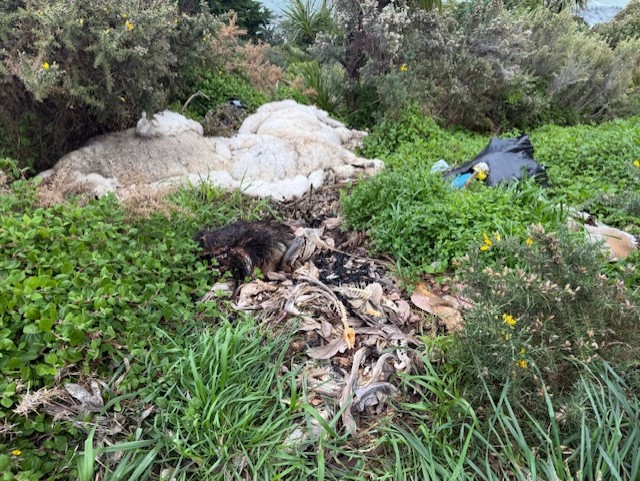It looks bad, smells bad, is toxic to the environment and is illegal but, worst of all, it’s on the rise. Illegal rubbish dumping appears to be growing in South Wairarapa with the discovery of another dump site, about two metres along Cape Palliser Road from the biggest site on record, which is to be cleaned up as soon as contractors have enough dry days in a row.
“Ratepayers bear the initial cost of the clean-up of illegal rubbish dump sites because councils have a legal mandate to ensure rubbish is removed before it causes irrevocable harm to the environment,” says Janice Smith, Chief Executive Officer for South Wairarapa District Council (SWDC).
“The community and Council need to hold dumpers to account for their behaviour and we’re asking people to report all illegal dumping they see. The dumping is disrespectful to the environment and to all ratepayers in the district, who have to foot the bill. We want to take action to start recovering cleanup costs from those causing the harm,” says Smith.
The Council has approved a budget of $200,000 for the cleanup of the biggest illegal dumping site on record in South Wairarapa; on Cape Palliser, mere metres away from the newly discovered site.
Environmental damage
Illegally dumped rubbish typically contains hazardous substances, such as heavy metals, organic compounds and pathogens, which can disrupt aquatic ecosystems, harm wildlife and pose significant health risks to humans. High levels of nitrates and phosphates from decomposing organic waste can lead to eutrophication, which can deplete oxygen in water, kill fish and result in the loss of biodiversity. Another critical concern is waste washing out to sea during storms or heavy rain. This debris can pose danger to marine life and humans once in the ocean. Fishing is popular in the area and there is potential for catches to be contaminated by pollutants from the waste.
Illegal dumping must stop
South Wairarapa District Council, the Greater Wellington Regional Council and the Environmental Protection Authority want to collaboratively stop illegal rubbish dumping. This would include the investigation of deterrents, such as increasing surveillance at known sites and implementing measures to prevent vehicle access to protect our natural landscape, water safety and marine life.
A further option, in the form of a targeted rate, may be considered in the future if this behaviour continues.
Caption: Below – A newly discovered illegal dumping site on the South Wairarapa coast.

